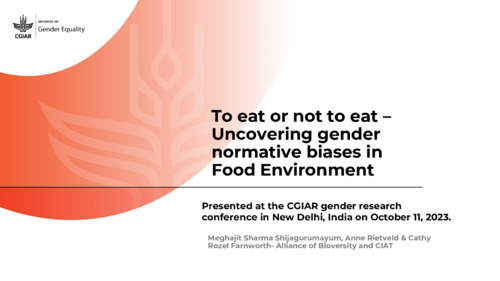To eat or not to eat – Uncovering gender normative biases in Food Environment
Abstract
Gender and social norms shape everyday life. Some norms lie so deep and are so fully naturalized that they lie below the level of conscious awareness. In the context of food environments, such norms might be deeply biased against women’s nutrition, food security, and health interests, impeding women’s options to build resilient livelihoods. We studied gender norms across multiple scales of the food environment as part of a larger study which examined normative constraints within food systems in relation to women’s economic resilience in a context of climate change. We asked if restrictive gender norms limit women’s adaptive capacity to climate change to build and maintain their livelihoods. Our data collection consisted of a systematic literature review complemented with analysis of secondary data from the GENNOVATE database. For the systematic literature review we selected literature in Web of Science on the basis of search terms adhering to ‘food environment,’ cross-referenced with ‘gender’ and ‘women.’ The selected 108 articles were reviewed and an annotated bibliography was produced. Results indicated that gender-based food discrimination is common across the world, albeit modes and severity vary, with women being disadvantaged both in terms of food-intake quantity (quantity) and quality (nutrients). One prominent normative bias which was reported across geographies was women forgoing their portion of food to ensure sufficiency for the rest of the family members. Further, they were reported to eat less nutritious food and/or to provide men household members with more nutritious foods—particularly animal-source foods. Such behavior is widely accepted and rationalized with connections to women’s care role, while negative impacts remain unrecognized. We conclude that interventions frequently fail to consider how gender and social norms shape food policies and interventions, leading to continuing biases against women. We draw out a set of recommendations on how to better support women’s adaptive capacity in this context.

